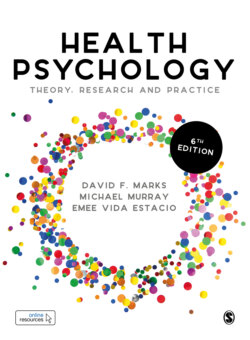Читать книгу Health Psychology - Michael Murray - Страница 79
Community Mobilization and Power
ОглавлениеConsidering that current global economic processes restrain the capacity of grassroots organizations to respond to structural challenges in health, it is important for future interventions to develop new methods to leverage power for such organizations (Campbell, 2014; Campbell and Cornish, 2014; Speer et al., 2014). It is important to recognize the need to transform power relationships, not just at individual and community levels, but also at macro levels (Ansell, 2014). As shown in the case presented in Box 5.3, developing strategic alliances can help grassroots organizations to strengthen their political power to affect policy change. Developing partnerships for health and community development ‘must be understood not as a tool for intervention, but as part of the interventions and definition of success’ (Aveling and Jovchelovitch, 2014: 34). The process of building partnerships involves critical reflection and is influenced by institutional and socio-cultural contexts.
BOX 5.3 INTERNATIONAL CASE STUDY: Creating social alliances to influence positive policy change
Speer et al. (2014) presented the case of ISAIAH, a faith-based community organizing group based in the Minneapolis–St Paul metropolitan area. It was formed in 2000 when three faith-based groups merged after recognizing that small groups do not have sufficient political power to influence change. It is now composed of 90 different organizations and uses a social action approach to affect positive policy change to address social inequity. The group had been instrumental in preventing the elimination of three stops for a light rail line being built in Minneapolis–St Paul. The communities that would potentially benefit from these transit stops were predominantly ethnic minority groups. The group influenced planning decisions and funding legislations by collaborating with neighbourhood groups and highlighting the link between transportation and health. As the authors noted:
Pursuing a deeper appreciation of the connection between health and transportation led ISAIAH leaders to policy professionals who emphasized the role of transportation for community vitality – through access to grocery stores, employment, schools, and affordable neighborhoods. Simultaneous to this discernment, ISAIAH responded to the Governor’s vetoes by revisiting state legislators and pushing back against the Governor’s neoliberal articulation of scarcity and limited resources. (Speer et al., 2014: 165)
To maintain the momentum of the group’s efforts, ISAIAH and its allies are currently working on a health-impact assessment to explore land-use policies to prevent the negative consequences of the rail line on marginalized neighbourhoods.
Source: Speer et al. (2014)
Campbell et al. (2010) showed that it is possible for people from disadvantaged communities to mobilize themselves to demand better social and economic conditions to improve health. They presented three successful pro-poor social movements in Brazil, India and South Africa wherein social groups demanded access to land, health services and life-saving medical treatment. A similar case is presented in Box 5.4, wherein pobladores successfully mobilized themselves to demand better living and working conditions in Chile (Hadjez-Berrios, 2014). In these case studies, although enabling disadvantaged groups to make their concerns heard was an important aspect of the movement, the willingness of those in power to take these demands seriously proved crucial to the success of these campaigns. As Stephens (2010) argued, health promotion research and practice need to recognize how those in more advantaged social positions maintain and perpetuate unequal power relations in society. She noted:
Using social theories will enable us to develop research questions with a focus on making visible the practices of those with privilege that work to simultaneously preserve and increase power and access to resources while denying access to other groups. (Stephens, 2010: 997)
BOX 5.4 INTERNATIONAL CASE STUDY: Community participation in health during the Unidad Popular Government – Santiago de Chile (1970–1973)
